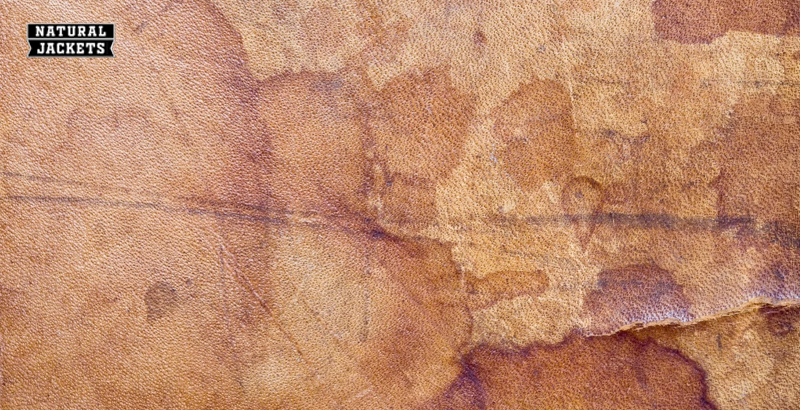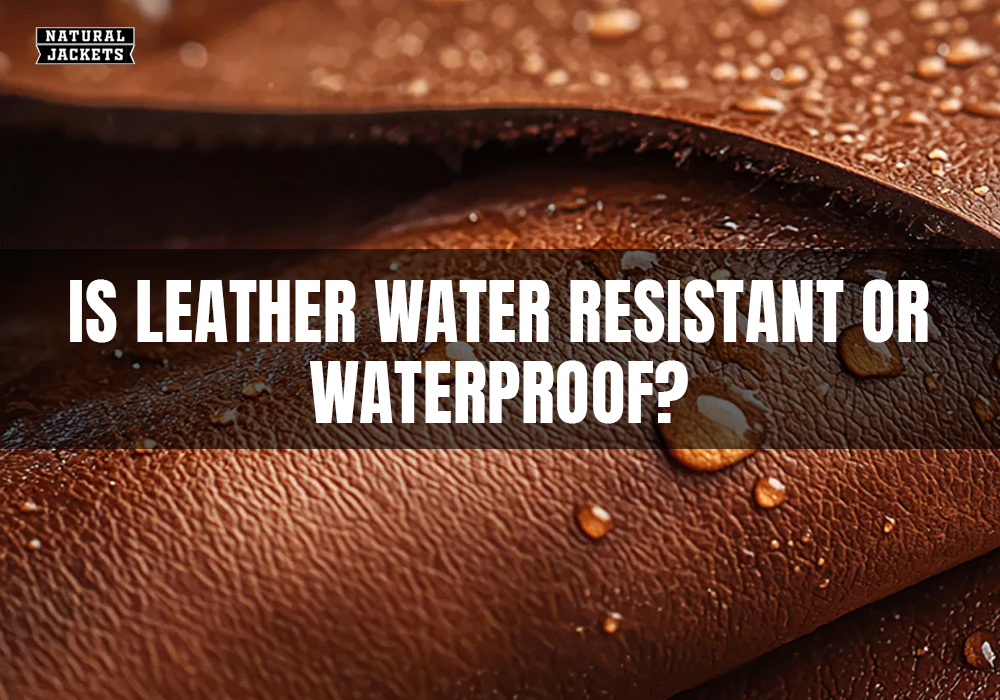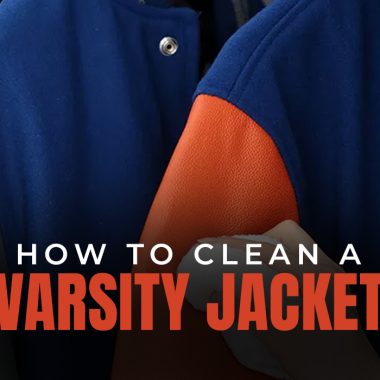Leather is a classic, timeless material that’s been a wardrobe essential for ages. People love it for its sophisticated look, comfy feel, durability, and functionality. But when it comes to keeping your prized leather possessions safe from the elements, we start wondering: Is leather water-resistant or waterproof? Let’s dive in and unravel this common query.
Understanding Leather and Its Properties
Leather is a natural material made from animal hides, most commonly cowhide. Through the tanning process, rawhide is treated to enhance its durability and flexibility. Leather that is not treated, being an organic material, is porous. This means it has pores that are microscopic, allowing moisture, air, and dust to pass through.
This is the main reason those leathers that are untreated usually are not water-resistant and prone to damage, discoloration, and cracking earlier, whereas tanned leathers are more robust, potentially resistant to wear and tear, damage, stiffening, and discoloration.
Water-Resistance vs. Waterproofing
Before answering the main question, let’s understand the difference between these two categories, “water-resistant” and “waterproof”. They are often used interchangeably; however, they have distinctive meanings:
Water-resistant:
This means the material is designed to resist the penetration of water up to some extent, but not entirely. It has features to withstand light splashes or brief exposure to rain, but it will eventually become saturated if prone to excessive water for longer durations. Think of a light rain jacket, it can provide you protection from water, but it can’t withstand a downpour.
Waterproof:
This implies that the material is intended to be completely water-resistant. No water can pass through it, even when exposed for longer periods. You can imagine a high-performance raincoat that always keeps the water out entirely.
The key difference lies in the degree of protection. Water-resistant offers partial protection, while waterproof offers complete protection.
Is Leather Water-Resistant?
The simple answer is: yes, leather is water-resistant, but up to some extent, not completely! The composition of leather with dense fibers provides a degree of natural protection against minor splashes or light rain. You must have noticed that when rain is pouring down a little, the leather performs very well. A few raindrops on your leather jacket bead up and roll off initially. It occurs due to the robust leather’s structure and natural oils.
Indeed, leather’s resistance has its limitations. Untreated leather is more prone to wear and tear if exposed to water for longer durations. It will start absorbing moisture, leading to several problems, including:
- As soon as water dries, the absorbed moisture shrinks or evaporates, which can lead the fibers to contract and ultimately result in stiffness and brittleness.
- Frequent cycles of getting wet and then drying out can bring about the leather cracking, especially in those areas that have a higher incidence of downpours.
- Water can leave marks and may spoil the natural color of the leather, making it dull and damaged.
- If leather remains damp for longer durations, it can become a breeding ground for mold and mildew, which leads to permanent damage and the production of undesirable odours.
Fortunately, there are many products of leather treated with different protocols during the manufacturing process to increase their water-resistance capabilities. For instance, some accessories like boots and outdoor gear are specifically crafted with elevated water-resistant properties; to maximize their functionality, they are often treated through specialized tanning techniques and the applications of super protective coatings. It also has advanced features like hydrophobicity to make your material more resistant to water.
Is Leather Waterproof?
To be clear, leather derived organically is not waterproof. As mentioned earlier, it is porous means it will eventually absorb water if consistently exposed to water. Making Leather completely water-resistant requires special treatments, coatings, or combinations with other materials to induce water-resistant features.
Why couldn’t leather be fully waterproofed organically without special treatments? Because of its immense breathability, the most preferred quality among the qualities of leather, leather has pores. To make it completely waterproof, the pores need to be concealed entirely, which can sometimes compromise its natural feel and breathability.
Furthermore, there are so many advancements that have led to making leather basically waterproof. This usually incorporates:
Specialized tanning processes:
Some tanneries use unique methods to make the leather fibers less absorbent.
Waterproof membranes:
A common approach is to laminate a waterproof membrane (like Gore-Tex) between layers of leather, particularly in footwear and gloves. This creates a barrier that prevents water from penetrating while still allowing some breathability.
Surface coatings:
Heavy-duty, durable coatings can be applied to the surface of the leather to create a waterproof barrier.
While these products offer significant protection against water, it’s important to note that even “waterproof” leather often requires proper care and re-treatment over time to maintain its efficacy.
How to Protect Leather from Water Damage

Even if your leather isn’t fully waterproof, you can significantly improve its water-resistance and protect it from damage with a few simple steps:
Waterproof sprays and Conditioners:
These sprays make the leather waterproof and act as a physical barrier that repels water. For consistent care, following the regular protocols to condition your leather keeps it supple and nourished for longer durations, also ensuring its natural resistance.
Avoid prolonged Exposure:
Try to avoid wearing your leather accessories in heavy or heavy rain, as it could bring about damage to your leather. If they do get wet, dry them properly.
Proper drying:
If your leather is exposed to moisture and gets wet, never use direct heat sources for drying like hair dryers or radiators, as this leads to permanent cracks or stiffening. Despite this, you can dry it in open air at normal room temperature or gently blot away the excessive moisture. Also, avoid direct contact with the sunlight. You can stuff shoes or bags with newspaper to retain their shape, which ensures longevity and maximum functionality.
Regular cleaning: Regular cleaning protocols helps maintain its protective qualities.
Understanding different leather types: Different categories of leather offer different degrees of natural water-resistance. In the same way, understanding the distinctive features of Faux leather and PU leather is significant, as their water-resistant abilities differ to some extent from genuine leather.
Conclusion
Leather is designed to be naturally water-resistant to a certain extent, meaning it can withstand minor water exposure. However, it is generally not waterproof. Genuine waterproofing demands special treatments, coatings, and conditioners. The significant difference is that weather offers up to a certain extent protection against moisture, but making it genuinely waterproof requires crucial treatment to enhance its water-resistance and prolong its life.
Treatment of leather with waterproof sprays and applying the best protocols for care in wet environments, you can simply protect your leather goods from damage occurring due to water and ensure they remain beautiful and vibrant. Leather is naturally attractive and one of the best materials you can have in your wardrobe, so taking care of your leather apparel is essential for longevity, durability, and maximum functionality.









